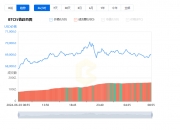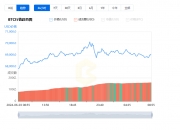目录
区块链技术是一种分布式账本技术,它通过加密和安全验证机制,允许网络中的多个参与者之间进行可信的、不可篡改的交易和数据的记录与传输。区块链技术的应用场景广泛,其优势也十分显著。
Block chain technology is a distributed account technology & #xff0c; it allows for the recording and transmission of credible, non-alterable transactions and data between multiple participants in the network through encryption and security certification mechanisms & #xff0c. Block chain technology is widely applied & #xff0c; its advantages are also significant.

1.加密货币:区块链最初和最著名的应用是比特币,一种去中心化的数字货币。
2.供应链管理:通过区块链,可以追踪商品从生产到交付的每一个步骤,增加透明度和效率。
3.智能合约:智能合约是自动执行、控制或记录法律相关事件和行动的计算机程序,它们在满足合约条款时自动执行。
4.身份验证和隐私保护:区块链可以提供一个安全、不可篡改的身份认证机制。
5.金融服务:区块链可以简化支付和清算流程,降低交易成本,并提高交易速度。
6.房地产交易:通过区块链进行房地产交易可以简化流程,减少欺诈,确保所有权的清晰和不可篡改。
7.医疗健康:区块链可以用于安全地存储和共享医疗记录,同时保护患者隐私。
8.版权和知识产权保护:区块链可以用于追踪和保护艺术作品、音乐、文学作品等知识产权。
9.选举和投票:区块链可以提供一个透明、不可篡改的投票系统,增加选举的公正性。
1. Encrypted currency xff1a; initial and most famous applications of block chains are Bitcoin xff0c; a decentralised digital currency.
2. Supply chain management xff1a; through block chains xff0c; with the possibility of tracking every step from production to delivery xff0c; with greater transparency and efficiency.
3. Smart contracts xff1a; smart contracts are computer programs that automatically execute, control or record legal-related events and actions xff0c; they are implemented automatically in fulfilment of the terms of the contract.
4. Identification and privacy protection xff1a; block chains can provide a secure, non-rotable identity certification mechanism
financial services xff1a; blocks can simplify payment and settlement processes #xff0c; supply of non-transactionable blocks xx1; storage blocks xx6x6xx6xxxbr; security chain < nxxxxxxxxx#kxfffffffint.int.int.int.ints. & < #fffffff.int.int. #s.int. #s. & #x.x.x.x.x.x.ffffffffff.int.

1.去中心化:区块链不依赖于中心化的第三方机构,减少了单点故障的风险。
2.透明性和可追溯性:所有交易记录都是公开的,任何人都可以查看,这增加了系统的透明度。
3.安全性:区块链使用先进的加密技术,确保数据的安全性和完整性。
4.不可篡改性:一旦数据被记录在区块链上,就几乎不可能被修改或删除。
5.效率提升:区块链可以自动化许多传统上需要人工处理的流程,提高了效率并降低了成本。
6.信任机制:区块链通过其共识机制建立了一个不需要信任第三方的信任环境。
7.跨区域交易:区块链可以简化跨境交易,降低汇款成本,并提高速度。
Decentralizing xff1a; block chains not dependent on centralized third-party institutions xff0c; reducing the risk of single point failure.
2. Transparency and traceability xff1a; all transaction records are open xff0c; anyone can see xff0c; this increases transparency of the system.
3. Security xff1a; block chains use advanced encryption techniques xff0c; ensuring the security and integrity of data
4. Irreversible xff1a; once the data are recorded on the block chain xff0c; establishing a trust environment through its consensus mechanism that does not require trust;
5. Efficiency enhancement xff1a; block chains can automate many of the processes that traditionally require manual processing xff0c; efficiency and cost reduction
6 confidence mechanisms xff1a; and cross-border transaction cost reduction < xxxxxxxxx0xxxf 1;
随着技术的不断成熟和应用案例的增多,区块链技术预计将在更多领域得到应用,为社会带来更多的便利和信任。然而,它也面临着扩展性、能源消耗、法律和监管等挑战。
As technology matures and applies more cases xff0c; block chain technology is expected to be applied in more areas xff0c; bringing more convenience and trust to society. xff0c; however, it also faces the challenges of expansion, energy consumption, law and regulation.

一个生活中使用区块链的经典案例是食品溯源。通过区块链技术,消费者可以追踪食品从农场到餐桌的整个流程,确保食品的安全和质量。
A classic case in which a block chain is used in life is food traceability. Through block chain technology & #xff0c; consumers can track the entire flow of food from the farm to the table & #xff0c; and ensure the safety and quality of food.
食品溯源案例:
1.生产阶段:农民或生产商在食品生产过程中,将食品的信息(如种植时间、地点、使用的农药和肥料等)记录在区块链上。
2.加工阶段:食品加工商在接收原材料后,将其加工信息(如加工日期、使用的添加剂等)添加到区块链上。
3.分销阶段:分销商在食品准备发货时,记录物流信息(如发货日期、运输方式等)到区块链。
4.零售阶段:零售商在接收食品后,更新区块链上的信息,包括到达时间和存储条件。
5.消费者购买:消费者通过扫描产品包装上的二维码,可以访问区块链上的信息,查看食品的整个来源和历史。
xff1a;
1. Production phase xff1a; Farmers or producers in food production xff0c; Information on food xff08; xff09 e.g. planting time, place, pesticide and fertilizer used xff09; Recorded in block chains.
2. Processing phase xff1a; Food processors after receiving raw materials xff0c; Processing information xff08; Sales information xff09, e.g., processing date, additive used xff09; Added to block chain.
3. Distribution phase xff1a; Distributors on food preparation xff0c; Recording logistics information xff08; xff09, e.g., date of shipment, mode of transport, etc. xffff09; Accessible to block chain
优势:
1.透明度:消费者可以实时查看食品的来源和历史,增加了透明度。
2.信任:由于区块链的不可篡改性,消费者可以更加信任所购买食品的信息。
3.效率:区块链可以简化食品溯源流程,减少文书工作,提高效率。
4.食品安全:一旦发现食品问题,可以快速追踪到问题的源头,采取相应的措施。
Strengths xff1a;
1. Transparency xff1a; consumers have real-time access to the origin and history of food xff0c; transparency has been increased.
2. Trust xff1a; consumers can trust more about the food purchased because of the inflexible nature of the block chain xff0c;
3. Efficiency xff1a; block chains can simplify the food traceability process xff0c; reduction of paperwork xff0c; enhanced efficiency.
4. Food safety xff1a; food problems xff0c; fast track to the source of the problem xff0c; corresponding measures.
这个案例展示了区块链技术如何被应用于日常生活中的实际场景,以提高食品安全和消费者信任。随着技术的发展,预计会有更多的食品公司和供应链运营商采用区块链技术来改善其产品的溯源和质量管理。
This case shows how block chain technology is being applied to real scenes in everyday life & #xff0c; improving food safety and consumer trust. As technology develops & #xff0c; more food companies and supply chain operators are expected to use block chain technology to improve the traceability and quality management of their products.

注册有任何问题请添加 微信:MVIP619 拉你进入群

打开微信扫一扫
添加客服
进入交流群


















发表评论